Categories: Inventory Management
By Mark Tomalonis
Principal, WarehouseTWO, LLC
 Chances are that every one of your customers has purchased something from Amazon.com ("Amazon"). If you are a manufacturer or a wholesaler-distributor of industrial products, this is a problem. But not because Amazon might be a direct competitor. Rather, it is a problem because Amazon has seduced your customers into expecting everything to be available from stock for immediate shipment. How can you meet this expectation of next-day product availability on a wide variety of products, without investing in more inventory?
Chances are that every one of your customers has purchased something from Amazon.com ("Amazon"). If you are a manufacturer or a wholesaler-distributor of industrial products, this is a problem. But not because Amazon might be a direct competitor. Rather, it is a problem because Amazon has seduced your customers into expecting everything to be available from stock for immediate shipment. How can you meet this expectation of next-day product availability on a wide variety of products, without investing in more inventory?
What makes Amazon so attractive to your customers? Product variety. In 2017, Amazon sold over 350 million unique items. With such a variety of products available for immediate shipment, no wonder Amazon is a first choice for on-line shopping. (In a 2016 survey, over half of survey takers responded that they search at Amazon first when looking for something on-line.) But Amazon typically owns only about 12 million unique items. Who is providing the other 340-million-plus items?
To offer such a wide variety of items when it owns only a small fraction of what it sells, Amazon relies on third-party vendors. Of the 350 million unique items sold at the Amazon website in 2017, over 340 million were sold by third-party vendors. During Amazon’s most recent fiscal quarter, over 50% of units sold through Amazon’s website were sold by third-party vendors. Amazon stocks the high volume, fast movers, while it leverages the inventories of thousands of third party vendors to provide hundreds of millions of unique items.
The Amazon website identifies which items are sold by Amazon and which are sold by third-party vendors. Figure 1 below shows sample wording for three different scenarios.
Figure 1. Examples of Fulfillment Method Wording at the Amazon.com Website
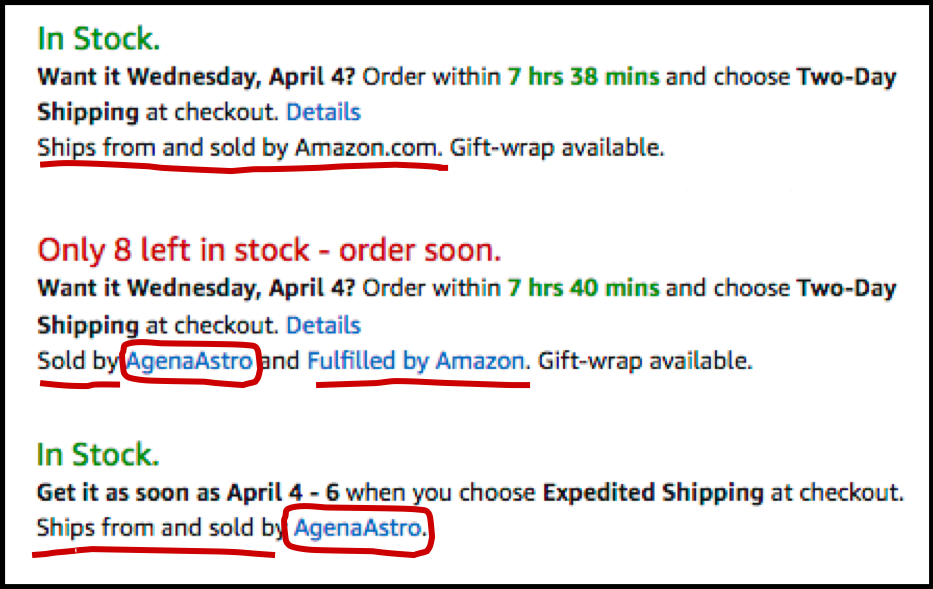
Consider any product line for which there are hundreds or thousands of unique items, such as those offered in a manufacturer’s catalog. There are popular items and rarely sold items. Sorting all items sold during an extended period (e.g. two years or more) likely results in a chart as shown in Figure 2. In this chart, the vertical scale indicates “popularity”, or number instances that the item was sold. The horizontal scale indicates unique items sold, sorted by decreasing popularity. The left-side 20% of the graphic indicates the most frequently sold items. The right-side 80% of the graphic indicates less frequently sold items. These items comprise the "long tail" of product demand. Managing the sale of the left-side group of items is relatively easy, and the risk of owning inventory on these items is relatively low. Managing the demand of the right-side group of items is expensive (e.g., non-stock transactions) and stocking these items has many risks, including tapering demand, finite shelf life and possible obsolescence.
Figure 2. Demand of Individual Items in a Product Line, Over Time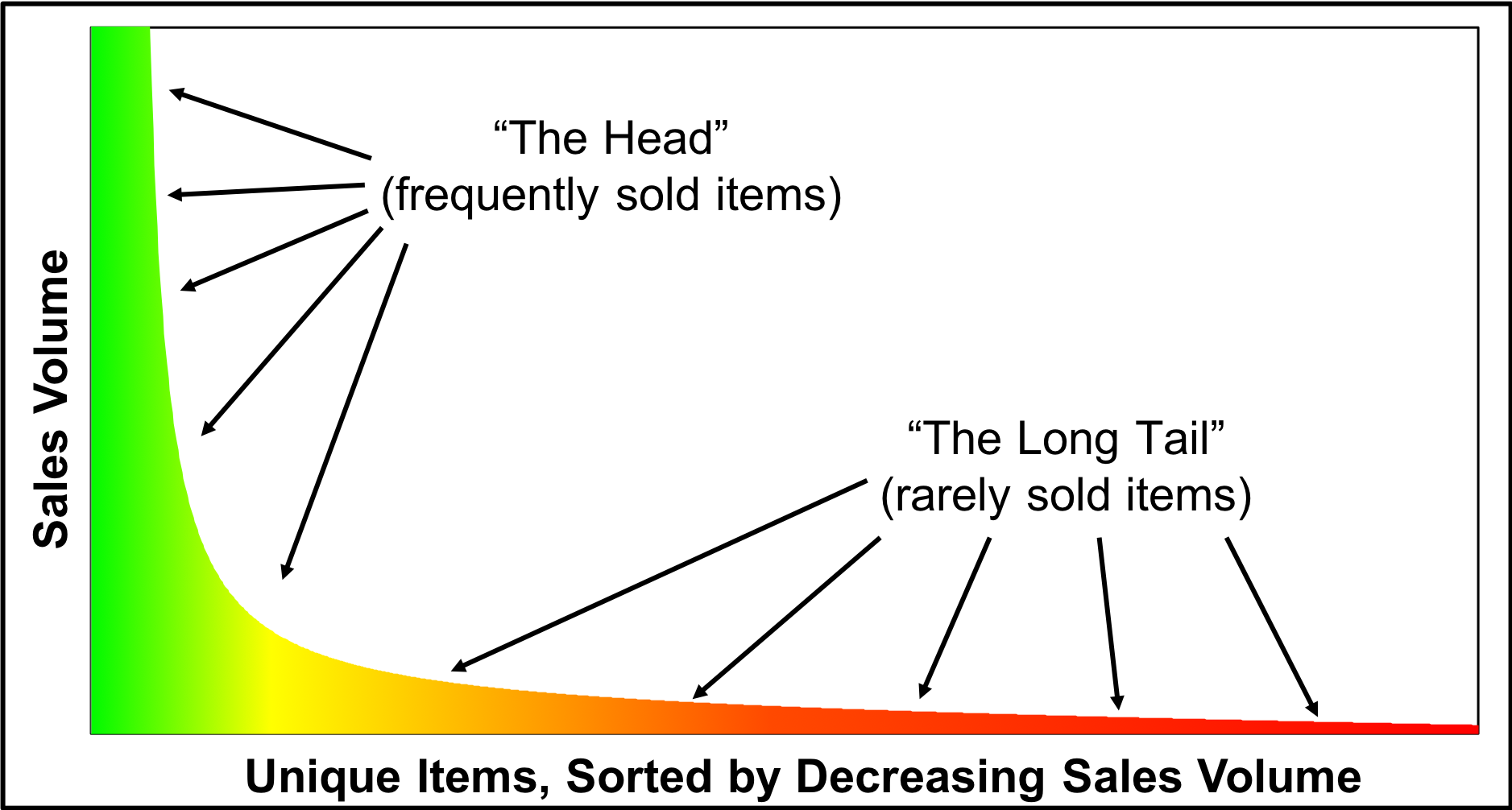
Amazon mitigates the expense and risk of managing the “long tail” items by partnering with third-party vendors. That is, Amazon owns, stocks and fulfills sales of popular items. Less popular items sold at the Amazon website are actually owned and sold by Amazon’s third-party vendors. As shown in Figure 3, Amazon offers to its customers “everything”, while mitigating the risk of stocking slower-moving items.
Figure 3. Amazon’s Management of the “Long Tail” of Product Demand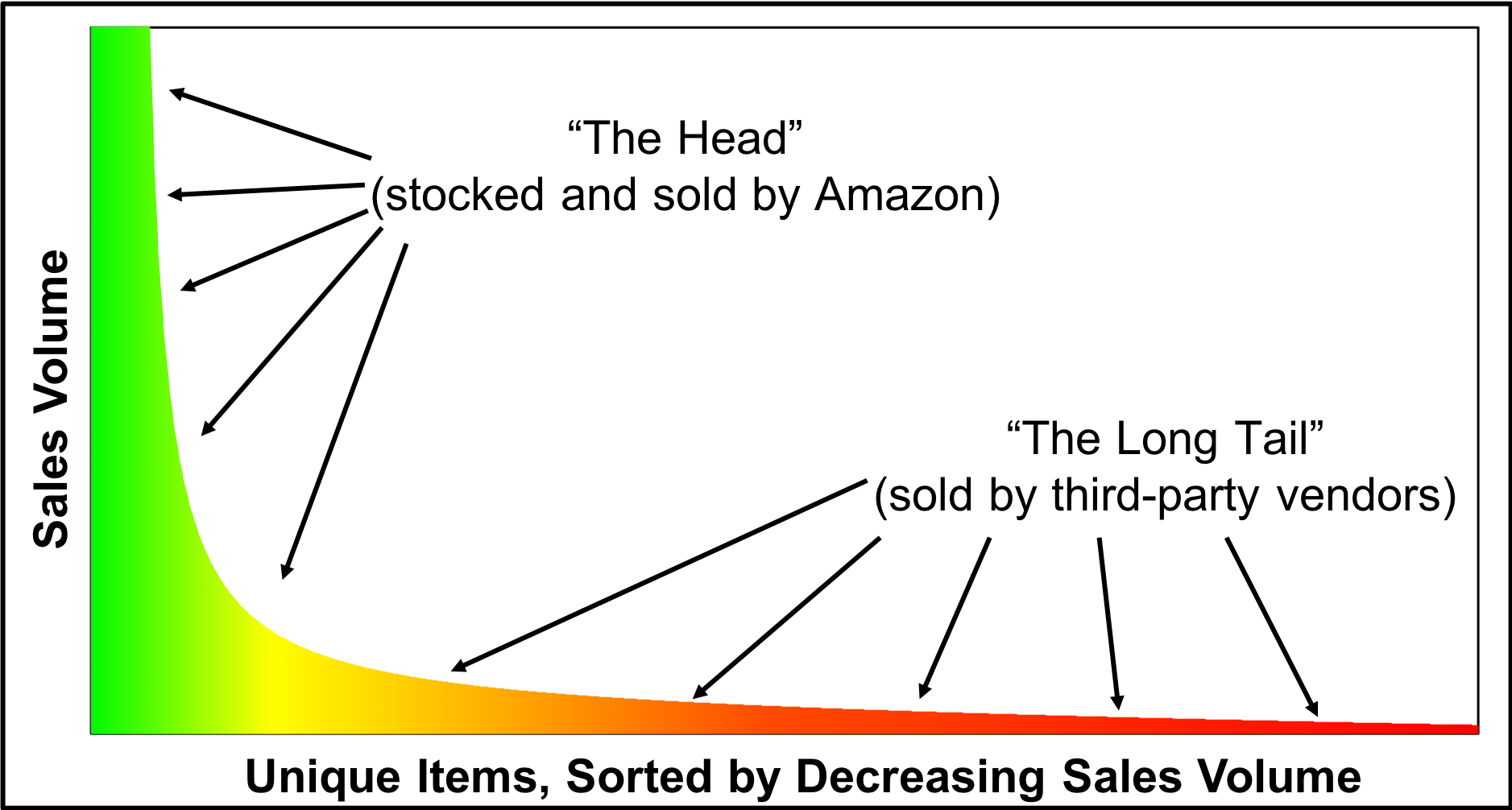
How can you emulate Amazon’s formula for successful customer loyalty? By collaborating with peer wholesaler-distributors in your industry. It’s called “inventory-sharing”. Figure 4 shows how, by leveraging the inventories owned by peer wholesaler-distributors, you can fulfill the breadth of product demand from your end-customers, without investing in low-volume, high-risk inventory.
Figure 4. How “Inventory-Sharing” Solves Product Demand Breadth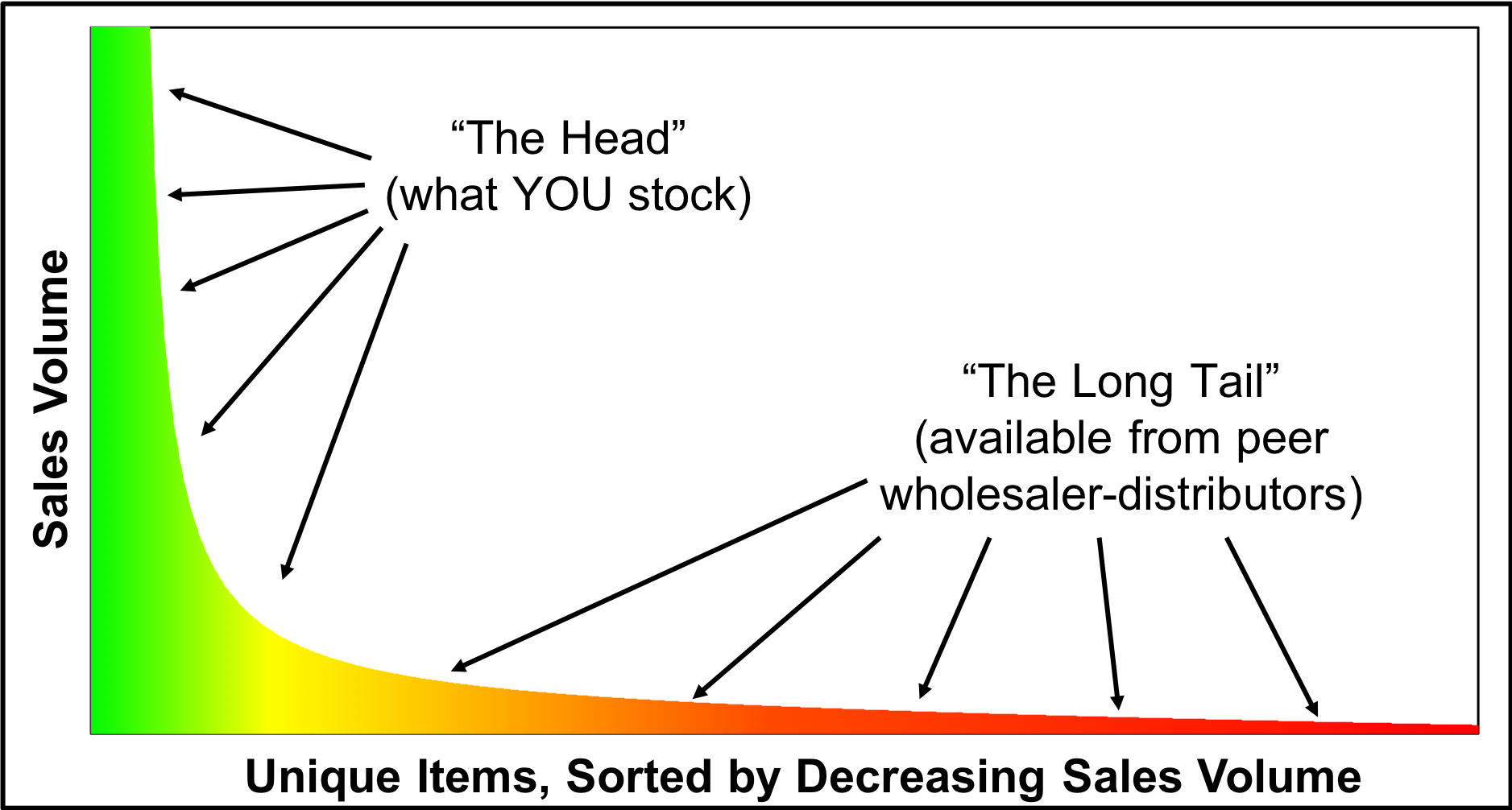
Figure 5 illustrates how Amazon leverages third-party vendors to provide exceptional product availability for its customers.
Figure 5. Amazon’s Product Fulfilment Paths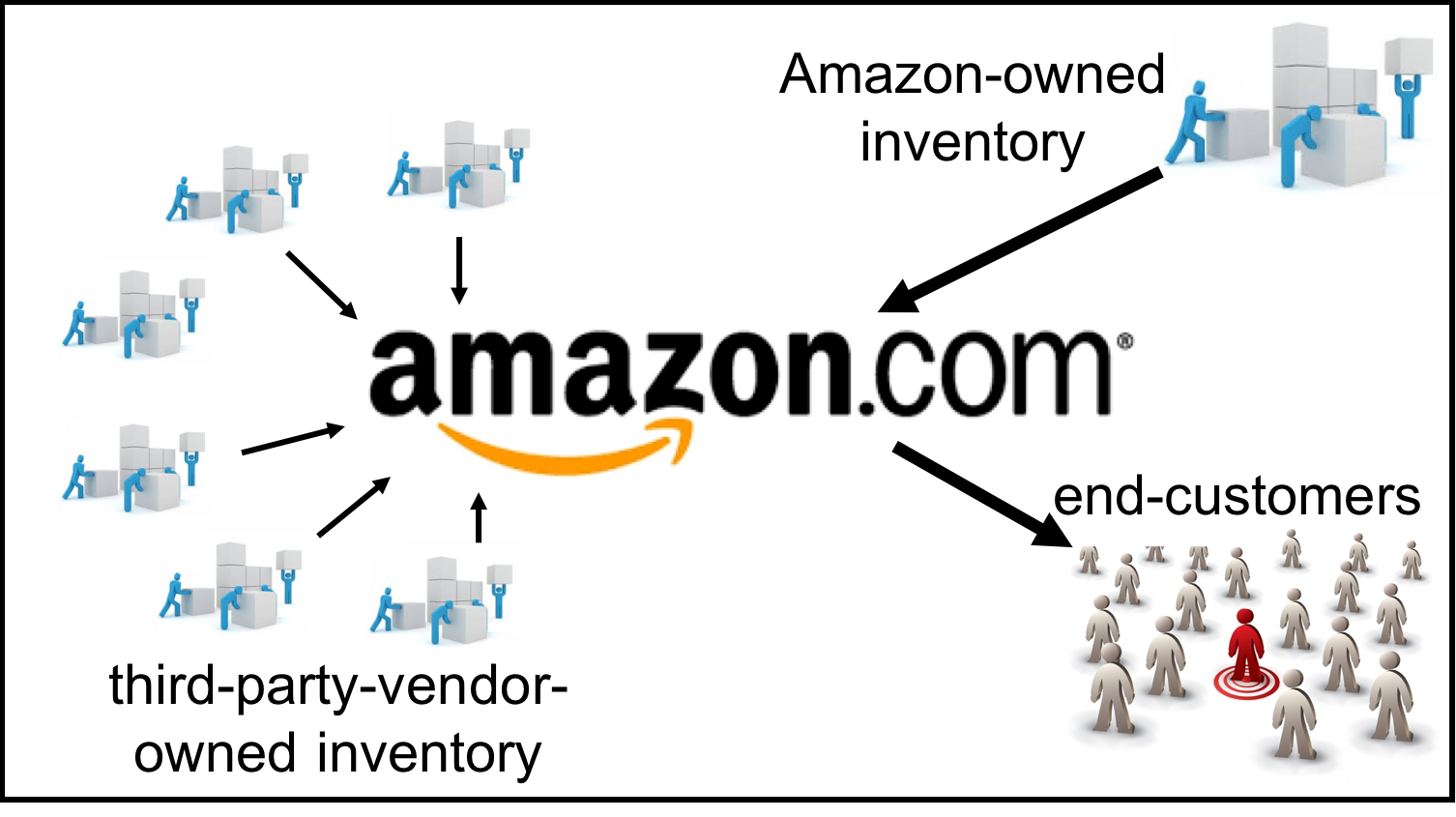
Similarly, Figure 6 illustrates how you can leverage the inventories owned by peer wholesaler-distributors, to provide exceptional product availability to your customers.
Figure 6. Leveraging Inventories of Peer Distributors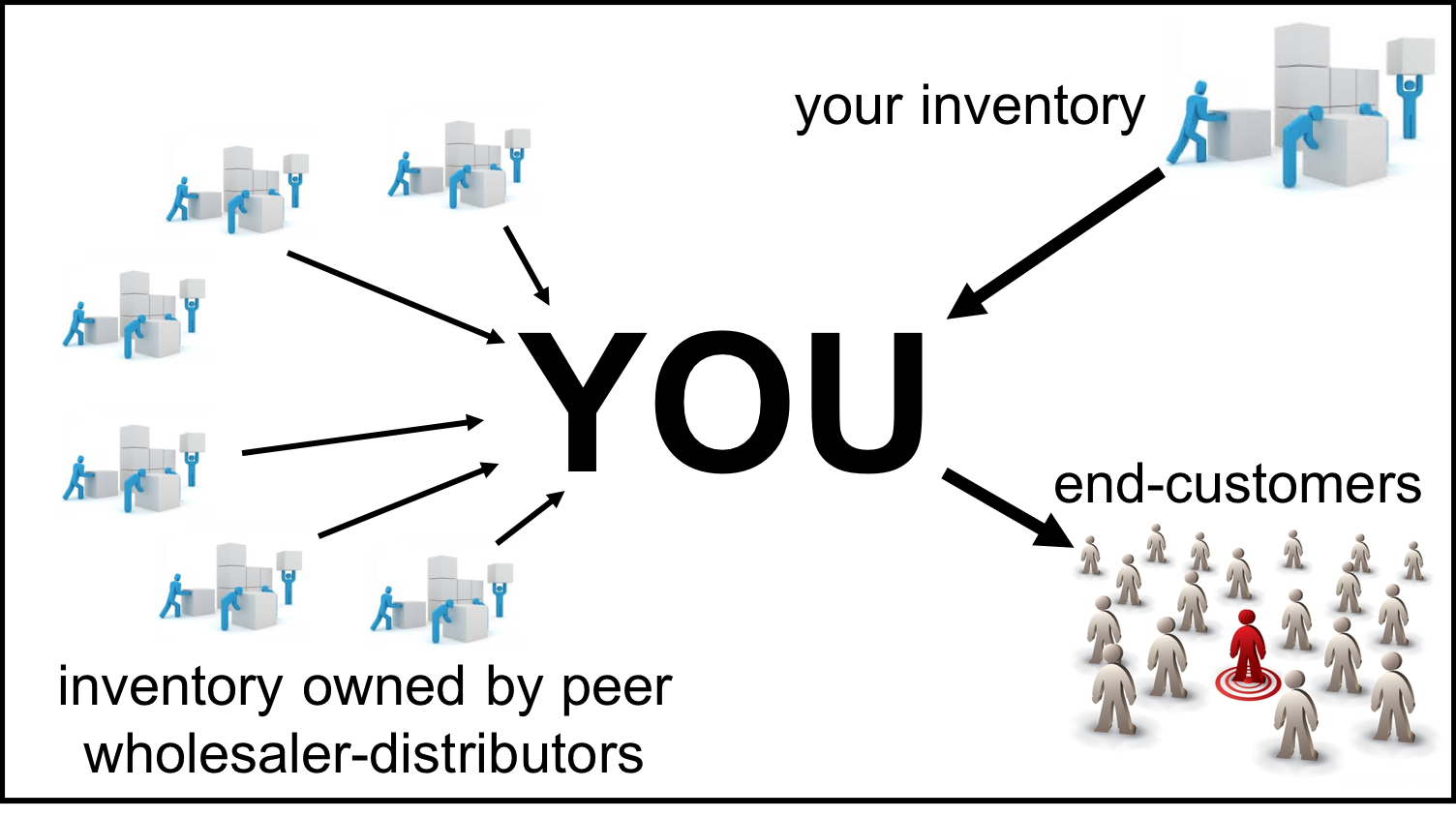
The principle of “inventory-sharing” is simple: By collaborating with peer wholesaler-distributors, you can serve your customers as if you owned thousands of additional items than you could never justify putting into your own stock.
I am not suggesting that you have peer wholesaler-distributors sell directly to your local end-customers. Rather, I am suggesting that you establish buy/sell relationships with peer wholesaler-distributors so that you can leverage their inventories. The benefit is that you can offer to your local end-customers that “long tail” variety of items. Sure, it’s in stock. It's just not in your stock, today. But your customers don’t need to know that.
Consider these methods for leveraging other wholesaler-distributors’ inventories:
Callin’ Around
Do you know the three largest distributors of the product lines that you sell? Calling them each time you have a demand for a non-stock item is not very efficient, but it’s a low-commitment way to experience the benefits of “inventory-sharing”.
On-line Email Groups
Party, er, run your business like it’s 1999. Create vendor-specific email groups at on-line forums (e.g., Google or Yahoo), and then send email blasts. This has limited efficiency, and results in many group members receiving emails unnecessarily. Also, it is dependent upon getting a response. Still, it is another way to experience the benefits of “inventory-sharing”.
Vendor-Hosted On-Line Databases
Perhaps your vendors have created an on-line tool that allows its distributors to upload inventory for sale to others in the manufacturer’s sales channel? While, in theory, this can be an effective solution, feedback to us has indicated that these systems contain only surplus inventory, that data is not refreshed frequently, and that different user interfaces for each vendor deter adoption by distributors.
Cloud-Based Software Tools
The best “inventory-sharing” solution is an on-line tool that enables you to collaborate simultaneously with multiple groups of peer wholesaler-distributors with a single user interface. When participants upload inventory data every night, browsing a networks inventory 24/7 is efficient and effective. And when integrated with advanced ERP system software (such as TrulinX®), browsing peer distributors’ inventories and sourcing a needed item from one of them is just a mouse click or two away.
For possible inventory-sharing resources and tools, search for the phrase “inventory-sharing” at Google or Bing.
“Inventory-sharing” with peer wholesaler-distributors is most easily achieved by collaborating through common interests and activities, managed by a “hosting” entity. Three collaborative groups that may offer an opportunity for successful inventory-sharing are:
Manufacturer’s Distributor Network
By definition, this group owns virtually all of a manufacturer’s finished goods inventory not owned by end-customers or the manufacturer itself. Therefore, the opportunity for successful inventory-sharing is highest within this group. Members of this group face nearly identical challenges in sourcing seldom-sold items from the manufacturer. Thus, motivation for cooperation is high, due to the likelihood of reciprocal transactions, over time. Finally, top-down communication and influence by the manufacturer can facilitate quick and widespread participation by members of this group.
Industry Buying Group
While there may be less overlap in brands of products that each member of this group sells, when compared to manufacturers' distributor networks, buying group members serve the same industry and similar customer types. Successful inventory-sharing within a buying group requires a strong leadership. While a buying group may not include as its members every distributor of a particular product line, the breadth of product offering by its members offers a unique opportunity to provide to its end-customers products from many different brands.
Industry Trade Association
This is the least cohesive of these three groups and therefore offers the greatest challenge for cooperation between members. Successful inventory-sharing among members depends entirely on the strength and commitment of association leadership.
Amazon.com attracts and retains its customers with unparalleled product variety, available for immediate shipment. It does this by leveraging the inventories owned by a vast network of third-party vendors. Manufacturers and their wholesaler-distributors can emulate similar levels of product availability, by collaborating with each other to leverage each other’s inventories. “Inventory-sharing” is not merely a competitive advantage. It is an essential tool in your quest to build and retain customer loyalty in a world in which your customers expect you to have “everything” in stock.
For the past thirteen years, we have been helping industrial wholesaler-distributors leverage the finished goods inventory in a manufacturer’s wholesale channel. Contact us if you want advice on how to initiate “inventory-sharing” with your peers. Whether or not you choose to use a cloud-based software tool such as WarehouseTWO, we'd be happy to share with you tips and “best practices” that we have learned over the years. For more about WarehouseTWO, watch this video.
“Amazon.com” and the “Amazon.com” logo are registered trademarks of Amazon.com and are used for reference only. All rights reserved.
About the Author After a successful career in sales and operations management in the wholesale-distribution industry, Mark Tomalonis is now principal of WarehouseTWO, LLC. He amuses himself by writing articles such as this one, to help wholesaler-distributors execute their operations better. Mark’s articles and tips are published in WarehouseTWO’s monthly e-newsletters. Click here to subscribe.
After a successful career in sales and operations management in the wholesale-distribution industry, Mark Tomalonis is now principal of WarehouseTWO, LLC. He amuses himself by writing articles such as this one, to help wholesaler-distributors execute their operations better. Mark’s articles and tips are published in WarehouseTWO’s monthly e-newsletters. Click here to subscribe.
About WarehouseTWO
WarehouseTWO, LLC is an independent “inventory-sharing” software tool created exclusively for durable goods manufacturers and their authorized distributors, and for any group of durable goods “peer” wholesaler-distributors, such as members of a buying/marketing group or cooperative. To learn how inventory-sharing with WarehouseTWO can help your business, visit the WarehouseTWO website, or email info@warehousetwo.com.